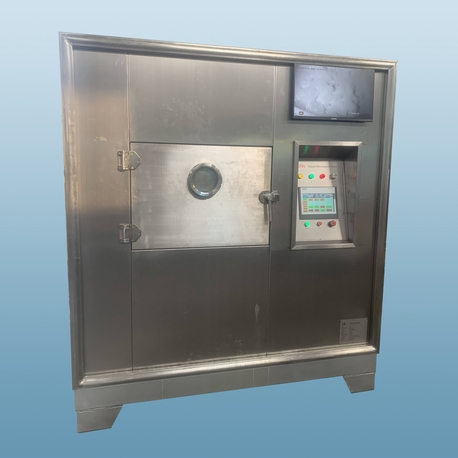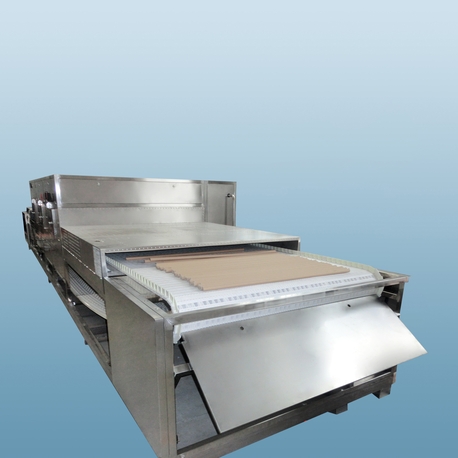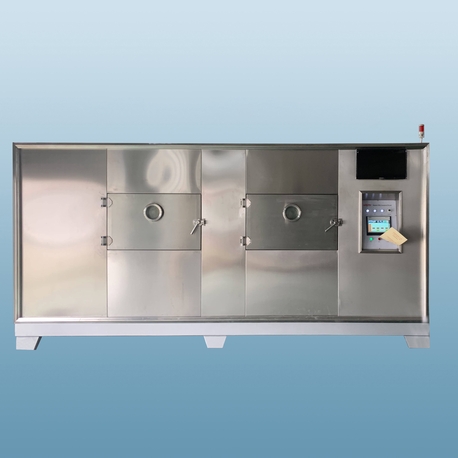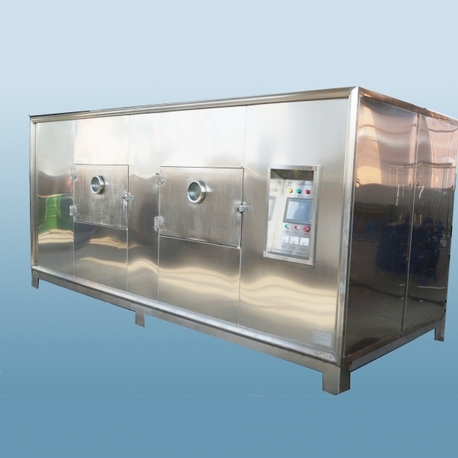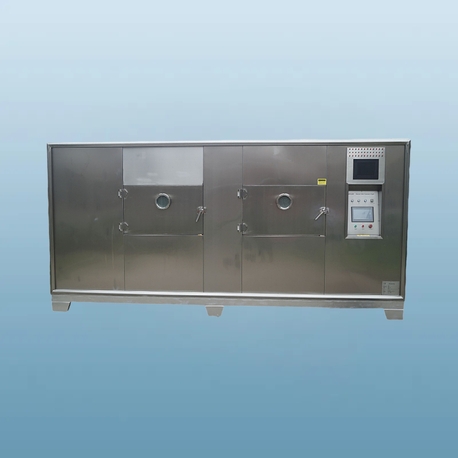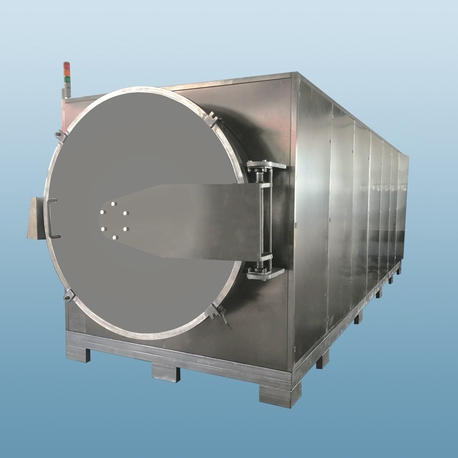Vacuum microwave drying is an advanced drying technology that combines the principles of vacuum processing and microwave energy to efficiently remove moisture from various materials. This method has gained significant attention across multiple sectors due to its ability to preserve product quality, reduce processing times, and enhance energy efficiency. Unlike conventional drying techniques, which often rely on high temperatures and prolonged exposure, vacuum microwave drying operates under reduced pressure, allowing water to evaporate at lower temperatures. This minimizes thermal damage to sensitive materials, such as foods, pharmaceuticals, and ceramics, while ensuring uniform drying. As industries increasingly prioritize sustainability and cost-effectiveness, vacuum microwave drying offers a compelling solution. In this article, we will explore five essential aspects of this technology, highlighting its mechanisms, advantages, applications, comparisons to traditional methods, and future potential. By understanding these facets, businesses can make informed decisions about integrating vacuum microwave drying into their operations.
The Science Behind Vacuum Microwave Drying
Vacuum microwave drying operates by leveraging the synergistic effects of vacuum conditions and microwave radiation. In a typical setup, materials are placed in a sealed chamber where the pressure is reduced, lowering the boiling point of water. Simultaneously, microwaves—electromagnetic waves with frequencies typically ranging from 300 MHz to 300 GHz—penetrate the material, causing water molecules to vibrate and generate heat through dielectric heating. This internal heating mechanism ensures that moisture is evaporated from the inside out, resulting in faster and more uniform drying compared to external heating methods. The vacuum environment facilitates the rapid removal of vapor, preventing re-condensation and allowing for precise control over the drying process. This combination is particularly effective for heat-sensitive products, as it avoids the high temperatures that can degrade nutrients, colors, or textures. For instance, in food processing, vacuum microwave drying helps retain vitamins and antioxidants that are often lost in conventional air drying or freeze-drying. Moreover, the technology allows for adjustable parameters, such as microwave power and vacuum level, enabling customization for different materials. This scientific foundation makes vacuum microwave drying a versatile and efficient option for various industrial needs, from preserving delicate herbs to drying electronic components without compromising integrity.
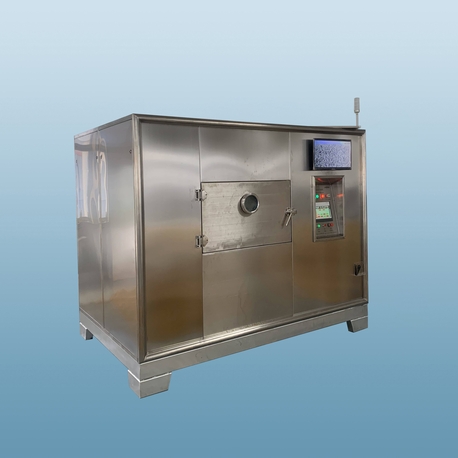
Advantages of Vacuum Microwave Drying
One of the primary benefits of vacuum microwave drying is its exceptional energy efficiency. By using targeted microwave energy and reduced pressure, this method significantly shortens drying times, leading to lower energy consumption compared to conventional techniques like hot-air drying or spray drying. For example, studies have shown that vacuum microwave drying can reduce energy usage by up to 50% in certain applications, making it an environmentally friendly choice. Additionally, the quality preservation aspect is a major advantage. Since the process occurs at lower temperatures, it minimizes the risk of thermal degradation, oxidation, or shrinkage. In the pharmaceutical industry, this means active ingredients remain stable, while in food processing, flavors, colors, and nutritional values are better maintained. Another key benefit is the uniformity of drying. Unlike traditional methods that can cause uneven moisture distribution—leading to spoilage or defects—vacuum microwave drying ensures consistent results throughout the material. This is crucial for products like ceramics or textiles, where structural integrity is paramount. Furthermore, the technology offers scalability, from laboratory-scale units to large industrial systems, allowing businesses to adapt it to their specific needs. The reduced processing time also translates to higher throughput and cost savings, as less labor and equipment are required. Overall, the advantages of vacuum microwave drying make it a superior choice for industries aiming to improve product quality while reducing operational costs and environmental impact.
Applications in Various Industries
Vacuum microwave drying has found widespread applications across diverse sectors due to its versatility and efficiency. In the food industry, it is commonly used for drying fruits, vegetables, herbs, and meats, where it helps preserve sensory attributes and extend shelf life without the need for preservatives. For instance, vacuum microwave-dried berries retain their vibrant color and antioxidant properties, making them popular in health foods and snacks. The pharmaceutical sector utilizes this technology for drying heat-sensitive drugs, vaccines, and herbal extracts, ensuring potency and stability while complying with stringent regulatory standards. In the chemical and materials industries, vacuum microwave drying is employed for processing polymers, catalysts, and ceramics, where precise moisture control is essential to prevent cracking or deformation. The electronics industry also benefits from this method for drying components like circuit boards, as it avoids electrostatic damage and ensures reliability. Additionally, agricultural applications include seed drying to maintain germination rates, while the textile industry uses it for fabric treatment to enhance durability. The environmental sector even applies vacuum microwave drying for sludge treatment, reducing waste volume and facilitating disposal. These varied applications demonstrate the adaptability of vacuum microwave drying, driven by its ability to handle different material types and requirements. As research continues, new uses are emerging in fields like nanotechnology and biotechnology, further expanding its industrial relevance.
Comparison with Traditional Drying Methods
When compared to traditional drying methods, vacuum microwave drying offers several distinct improvements. Conventional techniques, such as hot-air drying, freeze-drying, or oven drying, often involve longer processing times and higher temperatures, which can lead to energy inefficiency and product degradation. For example, hot-air drying may cause case hardening—a phenomenon where the outer layer of a material dries quickly, trapping moisture inside and resulting in uneven drying. In contrast, vacuum microwave drying provides uniform internal heating, eliminating this issue and producing higher-quality outcomes. Freeze-drying, while excellent for preservation, is typically more time-consuming and expensive due to the need for freezing and sublimation phases; vacuum microwave drying achieves similar quality in a fraction of the time and at a lower cost. Energy consumption is another critical differentiator: traditional methods often rely on convective or conductive heat transfer, which can be inefficient, whereas vacuum microwave drying uses direct energy absorption, reducing overall usage. Moreover, vacuum microwave drying allows for better control over process parameters, enabling customization for specific materials, unlike one-size-fits-all approaches in conventional systems. However, it is important to note that vacuum microwave drying may have higher initial equipment costs, but these are often offset by long-term savings in energy, maintenance, and improved product yields. Overall, the comparison highlights why many industries are transitioning to vacuum microwave drying for enhanced performance and sustainability.
Future Trends and Innovations in Vacuum Microwave Drying
The future of vacuum microwave drying is poised for exciting advancements, driven by technological innovations and growing industrial demands. One emerging trend is the integration of smart sensors and Internet of Things (IoT) capabilities, which enable real-time monitoring and optimization of drying parameters. This can lead to even greater efficiency and consistency, as systems automatically adjust microwave power and vacuum levels based on feedback. Another area of development is the combination of vacuum microwave drying with other technologies, such as infrared or ultrasound, to create hybrid systems that further enhance drying speed and quality. For instance, researchers are exploring how ultrasound can pre-treat materials to improve microwave penetration, reducing processing times for tough-to-dry substances. Sustainability will also play a key role, with efforts focused on reducing the carbon footprint of vacuum microwave drying through renewable energy sources and improved recyclability of components. In terms of materials, advancements are expected to expand the range of applications, including novel uses in biomedical engineering for drying tissues or in aerospace for composite materials. Additionally, cost reductions in microwave generator and vacuum pump technologies may make vacuum microwave drying more accessible to small and medium-sized enterprises. As global industries prioritize green manufacturing and high-quality outputs, vacuum microwave drying is likely to become a standard in many processes, supported by ongoing research and development. These innovations promise to solidify its position as a leading drying technology for the 21st century.
In conclusion, vacuum microwave drying represents a significant leap forward in drying technology, offering numerous benefits such as energy efficiency, quality preservation, and versatile applications. By understanding its scientific principles, advantages, and comparisons to traditional methods, industries can harness its potential to improve operations and meet sustainability goals. The future holds even greater promise with ongoing innovations, making vacuum microwave drying a key player in modern industrial processes.
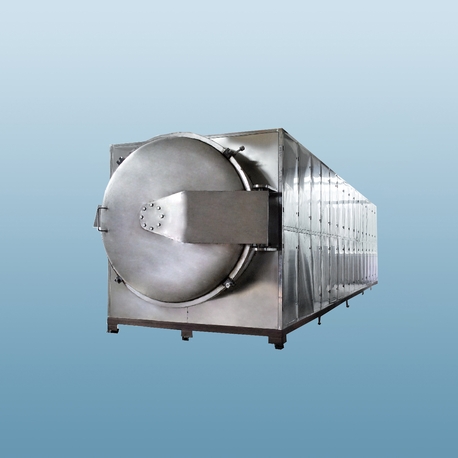
Frequently Asked Questions About Vacuum Microwave Drying
Q1: What is vacuum microwave drying and how does it work?
A1: Vacuum microwave drying is a advanced drying technique that combines vacuum conditions with microwave energy to remove moisture from materials. In this process, the vacuum lowers the boiling point of water, while microwaves generate internal heat through molecular friction, allowing for fast and uniform drying at lower temperatures compared to conventional methods.
Q2: What are the main advantages of using vacuum microwave drying?
A2: The key advantages include reduced drying times, lower energy consumption, better preservation of product quality (such as color, flavor, and nutrients), uniform moisture removal, and scalability for various industrial applications. It is particularly beneficial for heat-sensitive materials like foods and pharmaceuticals.
Q3: In which industries is vacuum microwave drying commonly applied?
A3: Vacuum microwave drying is widely used in industries such as food processing for drying fruits and herbs, pharmaceuticals for drug stabilization, chemicals for catalyst drying, electronics for component treatment, and agriculture for seed preservation. Its versatility allows it to handle a broad range of materials and requirements.
Q4: How does vacuum microwave drying compare to freeze-drying?
A4: While both methods are effective for quality preservation, vacuum microwave drying is generally faster and more energy-efficient than freeze-drying. Freeze-drying involves freezing and sublimation, which can be time-consuming and costly, whereas vacuum microwave drying achieves similar results with shorter processing times and lower operational expenses.
Q5: What are the challenges associated with vacuum microwave drying?
A5: Some challenges include higher initial equipment costs, the need for precise control to avoid overheating, and potential limitations in drying very thick or dense materials. However, these can often be mitigated through proper system design and process optimization, making it a viable option for many applications.


